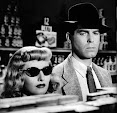Modern Plastic surgery has it's origin in the carnage of the First World War. Horrific head wounds left individuals grotesquely disfigured. The survivors were shunned and separated from society. In England, park benches were painted blue in order to warn people that the facially mangled might be sitting there, in France they had their own special train carriages. Struck down in the prime of their youth, one can only imagine the terrible and isolated lives these individuals must have had. Suicide, drunkenness, endless depression and despair. Repulsive to women and yet still a man. Wilfred Owen captured the torment in his poem, Disabled.
In an effort to heal the ravages of war a young New Zealand surgeon, Harold Gilles begins to operate on the terribly wounded soldiers and modern plastic surgery is born. There was recently an exhibition of his work, called the Faces of battle, it details his WW1 work and the men on whom he operated on. Warning it is quite graphic. It can be found here and here. Gille's aim was to restore these individuals to some form or normality so that they could return to society. He had some spectacular successes and for some there was no help. Looking at their faces, one wonders what sort of life they must have had. Although Gilles later pioneered aesthetic surgery techniques, he always felt that this was a distraction , his job was to restore the disfigured to normalcy..........
- He sat in a wheeled chair, waiting for dark,
- And shivered in his ghastly suit of grey,
- Legless, sewn short at elbow. Through the park
- Voices of boys rang saddening like a hymn,
- Voices of play and pleasure after day,
- Till gathering sleep had mothered them from him.
- About this time Town used to swing so gay
- When glow-lamps budded in the light-blue trees
- And girls glanced lovelier as the air grew dim,
- -- In the old times, before he threw away his knees.
- Now he will never feel again how slim
- Girls' waists are, or how warm their subtle hands,
- All of them touch him like some queer disease.
Some cheered him home, but not as crowds cheer Goal.
Only a solemn man who brought him fruits
Thanked him; and then inquired about his soul.
Now, he will spend a few sick years in Institutes,
And do what things the rules consider wise,
And take whatever pity they may dole.
To-night he noticed how the women's eyes
Passed from him to the strong men that were whole.
How cold and late it is! Why don't they come
And put him into bed? Why don't they come?
It seems somewhat perverse, that modern cosmetic surgery, so often subordinated to the desires of the vain and superficial, had its origins in the noble ideal of restoring people to physical normality.
Harold Gilles, a Dead White Man. Healer of Mankind.







